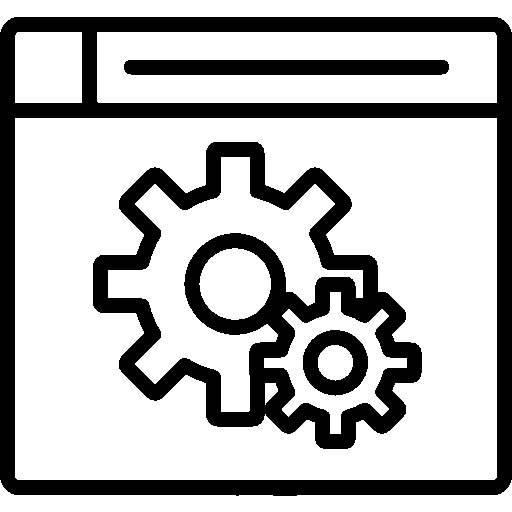- Products
- Platform
- Solutions
- Customers
- Support
- Pricing
 Website & Mobile & E-commerce
Website & Mobile & E-commerce
 CRM
CRM
 Operation & ERP
Operation & ERP
 Productivity
Productivity
 Support
Support
 Community
Community
 Learn
Learn
Application Support Point

Manage licenses of all your purchased apps.
- Version History
- Application Features
- User Manual
- FAQ
- Community
Definition
Licenses App is a platform that allows you to manage the software and services licenses your business uses.
Aim
The purpose of the Licenses Application is to effectively manage the software and service licenses used by your business, to ensure legal compliance by tracking license periods and terms of use, and to optimize license costs. This application helps you take the necessary actions before licenses expire by streamlining license renewal processes. It also aims to increase efficiency in license management and minimize risks related to your business's licensing processes.
Key Benefits
Key benefits of the Licenses App include:
- It allows all licenses to be monitored and managed from a central platform, which simplifies management processes.
- It ensures legal compliance by monitoring license periods and terms of use and reduces the risk of license violations.
- It prevents unnecessary expenses by optimizing license costs and supports budget planning.
- It tracks license renewal dates with automatic reminders, ensuring that necessary actions are taken before the licenses expire.
- It increases the legal and financial security of your business by minimizing the risks associated with licensing.
- It provides reports that allow you to quickly analyze license-related data and performance, thus supporting decision-making processes.
Login Screen
This is the Licenses application home screen.

Licenses
The Open Licenses Screen lists details of all licenses that are actively used and still valid.

The Closed Licenses Screen lists details of licenses that have expired, been revoked or are no longer in use.

The Revoked Licenses Screen lists the details of licenses that are not needed or have been revoked for certain reasons.

The Deleted Licenses Screen displays details of licenses that have been completely removed from the system and no longer have any records.

The All Licenses Screen lists all licenses your business owns and has used in the past in a single interface. It includes details of all licenses that are active (open), expired (closed), revoked and deleted.

Categories
Categories of licenses allow to group used or managed licenses based on different types or functions.

Customers
The Customers screen lists the details of all licenses assigned to the customer.

Providers
The Providers screen lists all suppliers and vendors who purchase licenses, services, or products.

Products
The license product screen lists the details of the license-based products used.

Alias Assignment
Give simple and easy names to your files with the Alias screen.

Membership Dues
This is the screen where the membership fee records created from the license records are listed.
Incoming Dues
This is the screen where incoming dues are displayed.

Outgoing Dues
This is the screen where the outgoing dues are displayed.

Periods
This is the screen where the dues periods are displayed.

Receivables
In the term and non-term receivables screen, details of receivables planned to be collected within a certain term, as well as non-term receivables, that is, receivables that can be collected immediately, are listed.


The overdue receivables screen lists the details of receivables that are overdue but have not yet been collected.

Debts
The payables screen lists payables with terms, non-term payables, and overdue payables.
Analysis
Customer Revenue Analysis is the screen where the revenue obtained from the customer is listed in detail.
Category Revenue Analysis is the screen that lists the revenue contributions of service or product categories.
Monthly Wage Analysis is the screen where the income earned in a certain period is examined on a monthly basis.
Settings
The settings document can be accessed via the relevant menu.
Please click for related content.
General Information
This is the screen that allows you to add a new license.

Summary
This is the screen where the license summary is displayed.

General Information
This is the screen where general information is displayed.

Links
Connection information is listed. Click the Add New Connection button, the connection is added and listed.

Log Records
View log records details.

General Settings
This is the screen where the general settings of the Licenses application are made.

Stage Definitions
Define a phase from the Phase Definitions menu.
Click on the Add New Stage button, enter the stage name, description and sequence number. The registration process is completed.

Basic Components
A record is added to the project detail through the marked applications.

Licensed Products
Licensed product information is listed. Click on the Add New Licensed Product button, select the license category and key generation, and save.

License Categories
Categorized license information is listed. Click the Add New button and the new category is saved.

Fee Settings
This is the screen where settings regarding dues are made.
License categories, incoming dues categories and outgoing dues categories are determined.

Automatic Numbering
Automatic numbering is performed for licenses. An automatic numbering structure is established by adding a prefix, an automatically increasing number and a suffix.

Default Metadata Definitions
Default Meta Data Definitions ensure that data and information are kept in a standard format within the system. Predefined data configurations are listed on this screen.

Personal Settings
Kişisel Ayarlar, kullanıcının bir yazılım veya platform üzerindeki deneyimini özelleştirmesine olanak tanıyan bir modüldür. Bu tür bir uygulama, kullanıcının kendi tercihlerine göre çeşitli ayarları yapılandırabilmesini sağlar.

Lisanslar uygulamasını özelleştirmek için Listeleme Ayarları ve Sütunlar ayarları yapılır.
Listeleme Ayarları
Detay Gösterim Yöntemi; Sekme veya Popup seçilir.
Varsayılan Takvim Filtresi; Günlük, Haftalık, Aylık, Senelik veya Tümü olarak seçilir.
Varsayılan Tarih Filtresi; Tahakkuk Tarihi veya Oluşturma Tarihi seçilir.
Sayfalamada Kayıt Sayısı; 25, 50, 100, 250 veya 500 olarak seçilir.
Sütunlar
Sıra
Hareket Kodu
Belge Kodu
Müşteri Bilgisi
Konu/Kategori
Aktarım
Oluşturma Tarihi
Güncelleme Tarihi
Tahakkuk Tarihi
Vade Tarihi
Silme Tarihi
Durum
Fiyat
Gecikme Tazminatı
Toplam
Yukarıda listenenen sutün maddeleri tercihe göre seçilerek kaydedilir.
Filtering Settings
Filtreleme ayarları, bir sistemde veya uygulamada belirli kriterlere göre verileri sınıflandırmak için kullanılır. Bu ayarlar, kullanıcıya yalnızca ilgili veya uygun içerikleri sunmaya yardımcı olur.

Filtreleme ayarları ekranında Tarih Aralığı, Aşamalar, Lisans Yönü, Dönem, Kategori, Aidat Bilgisi, alanları seçilerek filtreleme yapılır.
Sıralama; Bitiş Tarihi, Lisans No, Müşteri Adı veya Ürün Adı seçilerek sıralama yapılır.
Müşteriler, Ürünler, Vadeli Alacaklar menülerinde farklı filtreleme alanları mevcuttur.
Müşteriler

Filtreleme ayarları ekranında Aşama, Kategori, Ürün alanları seçilerek filtreleme yapılır.
Sıralama; Müşteri veya Toplam seçilerek sıralama yapılır.
Ürünler

Filtreleme ayarları ekranında Aşama, Lisans Kategorisi, Ürün Kategorisi, Anahtar Üretimi, Ürün Gru alanları seçilerek filtreleme yapılır.
Sıralama; Müşteri veya Toplam seçilerek sıralama yapılır.
Vadeli Alacaklar

Filtreleme ayarları ekranında Tarih Aralığı, Tahakkuk Edilmeyen Kayıtlar, Kategori, Durum, Aciliyet, Cari Aktarım Durumu, İcra Durumu alanları seçilerek filtreleme yapılır.
Sıralama; ID, Müşteri, Konu, Kategori,Tarih, Fiyat, Durum veya Aciliyet seçilerek sıralama yapılır.
Vadeli Borçlar

Filtreleme ayarları ekranında Tarih Aralığı, Aciliyet, Şube, Kategori, Durum alanları seçilerek filtreleme yapılır.
Sıralama; ID, Müşteri, Konu, Kategori,Tarih, Fiyat, Durum veya Aciliyet seçilerek sıralama yapılır.
Questions
Ask questions and get answers from other Entranet users.

















